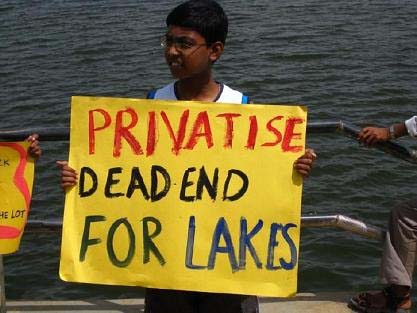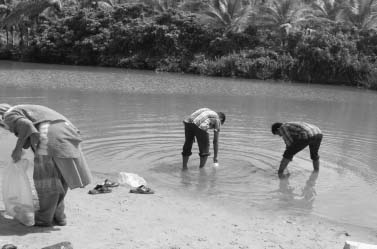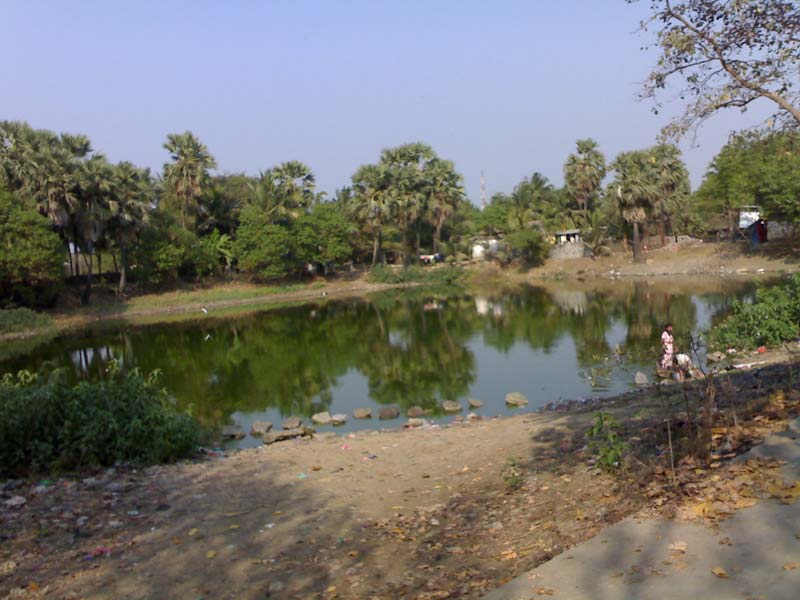/topics/biological-pollution
Biological Pollution
Status of groundwater quality in India - Report of the survey conducted in metropolitan areas by the CPCB
Posted on 24 Nov, 2011 05:36 PMThe report recognises that most groundwater quality problems are anthropogenic in origin, caused by a combination of over-exploitation and infiltration of wastes. Inadequate infrastructure and resources mean that waste generated by cities and industrial areas is not properly collected, treated and disposed, thus leading to grondwater contamination.
Karnataka High Court Committee strongly discourages commercial involvement in lake management and rejuvenation
Posted on 23 Nov, 2011 03:57 PMContent and photo courtesy: Environment Support Group
On the contentious policy relating to privatization of lakes, the Justice N K Patil Committee appointed by the Karnataka High Court has recommended that private sector participation solely based on commercial interest is not desirable.

In a significant development, the Committee appointed under the Chairmanship of Justice Mr. N. K. Patil, Judge of the Karnataka High Court and Chairman High Court Legal Services Committee, in response to the Public Interest Litigation by Environment Support Group challenging the privatisation of management and rehabilitation of lakes in Bangalore (WP 817/2008), has strongly recommended that ““private sector participation solely based on consequential commercial interest” is not a desirable model” (Emphasis in original).
Status of water treatment plants in India - A report on their operational status by the Central Pollution Control Board
Posted on 23 Nov, 2011 11:47 AMThis document by the Central Pollution and Control Board (CPCB) describes the findings of a study that evaluated water treatment plants located across the country, for prevailing raw water quality, water treatment technologies, operational practices, chemical consumptio
Demonstration cum dissemination of the feasibility of KAF (Kanchan Arsenic Filter) in Assam - A workshop report - IGSSS and Welthungerhilfe (26th July 2011)
Posted on 21 Nov, 2011 10:26 AMThe workshop aimed at possible replication and acceptability of KAF as a viable, low cost appropriate arsenic mitigation measure in the arsenic contaminated regions of the country.
Water quality hot-spots in rivers of India – A report by Central Water Commission
Posted on 08 Nov, 2011 01:03 PM It evolves a methodology for identifying hot spots in Indian rivers. The water quality data is based on the average values observed during the last ten years (2001-2011) at 371 monitoring stations of CWC on almost all major, medium and minor rivers in India. In respect of Dissolved Oxygen and Biochemical Oxygen Demand, the Central Pollution Control Board's classification has been considered for evaluating the hot spot in the rivers.
It evolves a methodology for identifying hot spots in Indian rivers. The water quality data is based on the average values observed during the last ten years (2001-2011) at 371 monitoring stations of CWC on almost all major, medium and minor rivers in India. In respect of Dissolved Oxygen and Biochemical Oxygen Demand, the Central Pollution Control Board's classification has been considered for evaluating the hot spot in the rivers.
The physical and chemical quality of river water is important in deciding its suitability for drinking purposes. As such the suitability of river water for potable uses with regard to its chemical quality has to be deciphered and defined on the basis of the some vital characteristics of the water. Bureau of Indian Standards (BIS) vide its document IS: 10500:1991, edition 2.2 (2003‐09) has recommended the quality standards for drinking water and these have been used for finding the suitability of river water. On this basis of classification, the natural river water of India has been categorized as desirable, permissible and unfit for human consumption.
Efficacy, effectiveness and acceptability of closed containers, Moringa oleifera and in-home chlorination - A paper from AJTMH
Posted on 04 Nov, 2011 12:38 PMThis study published in the journal The American Journal of Tropical Medicine and Hygiene (AJTMH) aimed at assessing water contamination and the relative effectiveness of three options for point-of-use water treatment in South India.
Environmental monitoring programme on water quality in Kerala – A report by KSCSTE and CWRDM
Posted on 03 Nov, 2011 08:54 PM This report by the Kerala State Council for Science, Technology and Environment (KSCSTE) and Centre for Water Resources Development and Management (CWRDM) on water quality monitoring in Kerala covers all its forty four river basins. This is being done under the “Environmental Monitoring Programme on Water Quality” under which samples are being collected both from surface and groundwater sources.
This report by the Kerala State Council for Science, Technology and Environment (KSCSTE) and Centre for Water Resources Development and Management (CWRDM) on water quality monitoring in Kerala covers all its forty four river basins. This is being done under the “Environmental Monitoring Programme on Water Quality” under which samples are being collected both from surface and groundwater sources.
Groundwater sampling stations were fixed after conducting a sanitary survey in the panchayats. Water Quality Information System is being developed using Geographical Information Systems (GIS) to manage the water quality from point or non-point source of pollution.
In the first phase of the project, three river basins of Kerala viz. Kabbini, Periyar and Neyyar were monitored. The network was later expanded to basins such as Chaliyar, Kadalundi, Meenachil, Karamana, Anjarakandi, Pamba, Muvattupuzha, Bharatapuzha, and Chalakudy.
Lakes in Mumbai – A draft report by WWF India
Posted on 01 Nov, 2011 08:59 PM This draft report on the study of lakes by the World Wildlife Fund for Nature (India) documents the physical condition of the lakes in Mumbai. Apart from the three lakes - Tulsi, Powai and Vihar that used to provide water to Mumbai residents, there are many lakes in the Bombay Municipal Corporation jurisdiction that are either polluted by human sewage or industrial effluents and have remained neglected with increasing urbanization.
This draft report on the study of lakes by the World Wildlife Fund for Nature (India) documents the physical condition of the lakes in Mumbai. Apart from the three lakes - Tulsi, Powai and Vihar that used to provide water to Mumbai residents, there are many lakes in the Bombay Municipal Corporation jurisdiction that are either polluted by human sewage or industrial effluents and have remained neglected with increasing urbanization.
There is very little to no data available on the existence of lakes of Mumbai. Several RTI’s to the government bodies also revealed that there was a lacuna in terms of the availability of the data; as a result most of the water bodies are easily exploited. Under this study the baseline data was prepared with the help of Google Earth website. The areas appearing to be lakes were marked on the Google Earth Images. These were verified by the field staff through onsite visits. The survey was conducted during September and October, 2008 and March, 2009. The study considers only the fresh water lakes which were accessible and saline water impoundments have not been considered.
Performance of sewage treatment plants - Coliform reduction - Control of urban pollution series - CPCB (2008)
Posted on 27 Oct, 2011 12:38 PMThis report presents the findings of a study conducted by CPCB with the help of Indian Institute of Technology, Roorkee and Anna University, Chennai on the performa
Evaluation of operation and maintenance of sewage treatment plants in India - Control of urban pollution series - CPCB (2007)
Posted on 26 Oct, 2011 03:39 PMThis study was commissioned recognizing the fact that discharge of untreated sewage occurs not only because of inadequate installed capacity of sewage plants, but also due to the inadequate maintenance of existing plants.





